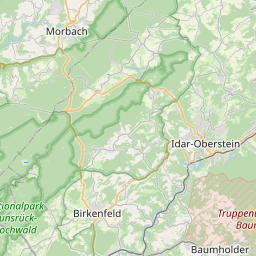






Description: Knowledge about distribution and seasonality of the pivotal atmospheric oxidant hydroxyl (OH) is essential to understand tropospheric chemistry, the distribution of reactive trace gases and their rates of removal from the atmosphere. A new and promising methodology for determining OH distribution is emerging. This new method is based on the detection of 14CO in the atmosphere. 14CO is a direct consequence of the interaction of cosmic radiation with the earth s atmosphere. Most neutrons produced eventually lead to 14CO via the nuclear reaction 14N(n,p) 14C. The freshly formed 14C is very rapidly oxidized to 14CO. It is the subsequent step of 14CO+OH = 14CO2+H which allows the assessment of OH, because 14CO production is known and resulting 14CO levels can be measured. Thanks to the recent advances in accelerator mass spectrometry (AMS) the extremely rare 14CO can be detected accurately. It is intended to determine 14CO bimonthly at 5 continental locations for 2 1/2 years starting at the upcoming solar minimum of solar cycle number 22. One additional very important site will be the GAW station of Izasa, Canary Islands (Spain), being more representative for the remote atmosphere, and lower latitudes. Two experiments are to be integral part of this project. One utilizes an elegant very recent development for direct measurement of the actual in situ production of 14CO by cosmic radiation. In this way the source and its modulation are better defined. The other experiment is the development of a time integrating alternative measurement technique. The project will give considerable details about CO in Europe, because next to concentration measurements, the 13C and 18O stable isotopic composition will be known as well. Analysis of these data will allow in a unique, and hitherto for Europe new way to constrain source estimates based on the isotopic partitioning. A major effort also will be directed in 3D modelling for studying the actual success of models to reproduce the various aspects of the new 14CO data. Presently, models have performed poorly in explaining 14CO data, which is due to some fundamental new challenging aspects of 14CO as compared to the usual test species, mainly methylchloroform (CH3CC13). Models transport properties as well as their OH distribution will be evaluated and improved, ultimately leading to a better understanding of the rate of removal of pollutants, with emphasis on Europe.
SupportProgram
Origins: /Bund/UBA/UFORDAT
Tags: Tierhaltungsanlage ? Hydroxid ? Messstation ? Blei ? Oxidationsmittel ? Kosmische Strahlung ? Geografische Koordinaten ? Chemie ? Kohlenmonoxid ? Massenspektrometrie ? Messtechnik ? Daten ? Schadstoffausbreitung ? Stoffbilanz ? Studie ? Troposphäre ? Modellierung ? Europa ? Atmosphäre ? Atmosphärenchemie ? Chemische Reaktion ? in situ ? Schadstoffbeseitigung ? AMS ? Accelerator-Mass-Spectrometrie ? Isotop ? Konzentrationsmessung ? Radikal [Chemie] ?
Region: Rheinland-Pfalz
Bounding boxes: 7.5° .. 7.5° x 49.66667° .. 49.66667°
License: cc-by-nc-nd/4.0
Language: Englisch/English
Time ranges: 1997-01-01 - 1999-12-31
Accessed 1 times.